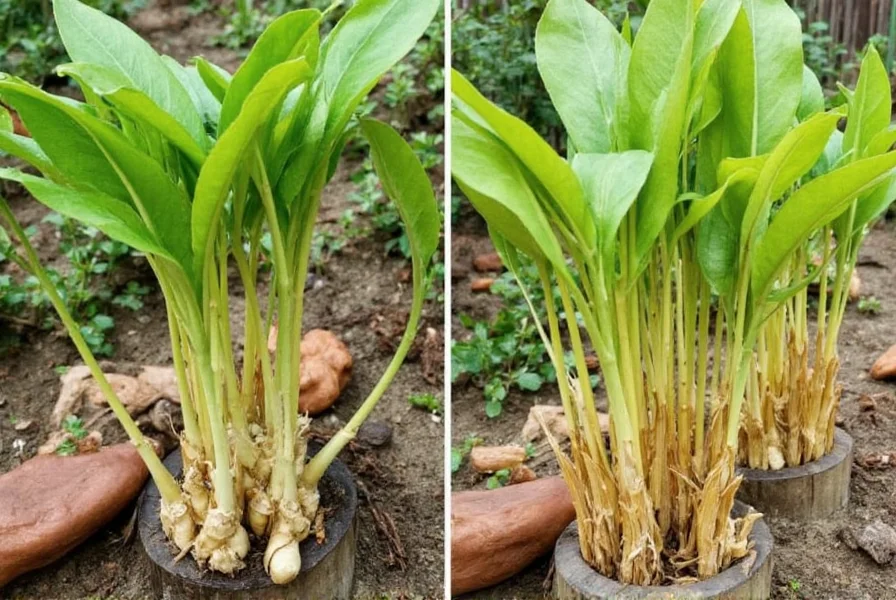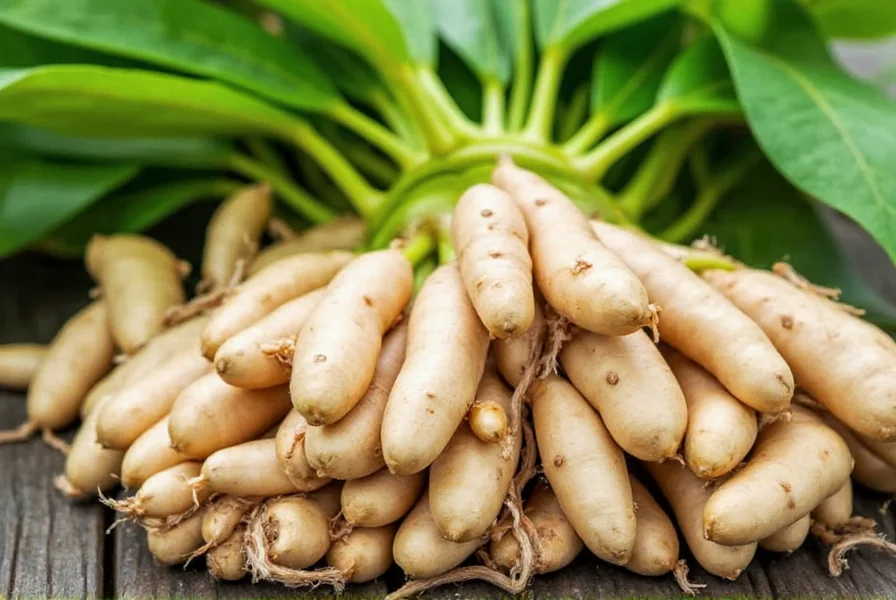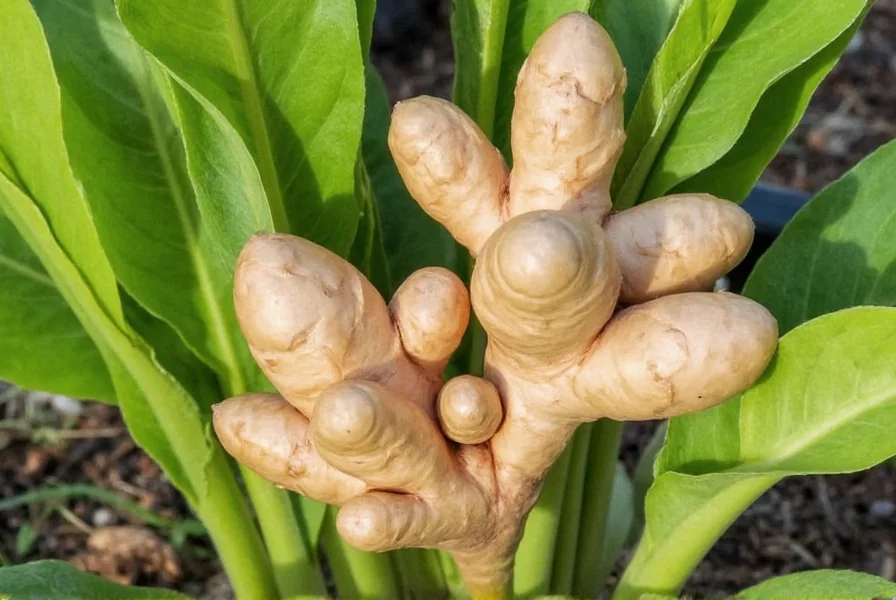Home gardeners increasingly seek sustainable ways to cultivate their own spices, and ginger root stands out as an accessible yet rewarding option. Unlike many tropical plants, ginger adapts well to container gardening, making it feasible for urban dwellers and those with limited outdoor space. This comprehensive guide details the practical steps for successfully growing ginger root from grocery store rhizomes, addressing common challenges and optimizing conditions for maximum yield.
Why Grow Your Own Ginger Root
Cultivating ginger at home offers multiple advantages beyond store-bought convenience. Freshly harvested ginger contains higher concentrations of gingerol—the compound responsible for its distinctive flavor and health benefits—compared to commercially processed roots. Homegrown ginger avoids the wax coatings and preservatives often applied to supermarket varieties. Additionally, growing ginger root supports sustainable gardening practices by reducing food miles and packaging waste associated with commercial distribution.
Selecting Quality Ginger Rhizomes for Planting
The foundation of successful ginger cultivation begins with selecting appropriate planting material. Look for plump, firm rhizomes with visible growth buds (often called 'eyes'), similar to potato sprouts. Grocery store ginger works well for home cultivation, though organic varieties avoid potential growth inhibitors from commercial treatments. Avoid shriveled or moldy roots, as these indicate poor viability. Each planting segment should contain 2-3 growth buds and measure approximately 1-2 inches in length.

Optimal Growing Conditions for Ginger Root
Ginger root originates from tropical climates, requiring specific environmental conditions to thrive. The ideal temperature range spans 71-86°F (22-30°C), with humidity levels above 70%. While ginger tolerates partial shade, it performs best with 2-5 hours of morning sunlight followed by afternoon shade. In temperate regions, grow ginger as a seasonal crop outdoors during warm months or maintain it indoors year-round near east- or west-facing windows.
Step-by-Step Ginger Planting Process
Prepare a well-draining potting mix combining equal parts potting soil, compost, and perlite or sand. Fill containers to within 2 inches of the rim, leaving space for mulch. Place ginger segments horizontally with growth buds facing upward, covering them with 1-2 inches of soil. Water thoroughly until moist but not saturated. Maintain consistent moisture during the initial growth phase, avoiding both drought stress and waterlogging.
Essential Care Requirements for Healthy Ginger Plants
Ginger requires consistent care throughout its growing cycle. Water when the top inch of soil feels dry, typically 1-2 times weekly depending on climate. Apply balanced liquid fertilizer every 4-6 weeks during active growth. As plants mature, add mulch to retain moisture and regulate soil temperature. In container gardening, ginger benefits from monthly rotation to ensure even light exposure. Monitor for yellowing leaves, which may indicate overwatering or nutrient deficiencies.
Common Challenges in Growing Ginger Root
Several issues commonly affect ginger cultivation, but most prove manageable with proper intervention. Root rot from excessive moisture remains the primary threat, preventable through well-draining soil and careful watering practices. Pests like spider mites occasionally appear, treatable with insecticidal soap solutions. In cooler climates, slow growth often results from insufficient warmth—consider using heating mats during early growth stages. Ginger naturally enters dormancy when temperatures drop below 50°F (10°C), causing leaf dieback that shouldn't be mistaken for plant death.
| Problem | Symptoms | Solution |
|---|---|---|
| Root Rot | Yellowing leaves, mushy rhizomes | Reduce watering, improve drainage, remove affected roots |
| Spider Mites | Webbing, stippled leaves | Spray with insecticidal soap, increase humidity |
| Slow Growth | Minimal leaf development | Increase warmth, apply balanced fertilizer |
| Leaf Scorch | Brown leaf edges | Provide more shade, increase humidity |
Harvesting and Storing Your Homegrown Ginger
Harvest timing significantly impacts ginger quality and flavor. For mature ginger, wait 8-10 months after planting until leaves yellow and die back naturally. Carefully dig around the plant perimeter to avoid damaging rhizomes. For continuous harvest, gently remove outer sections while leaving the main plant intact—a technique called 'hand harvesting.' After harvesting, cure ginger roots in a shaded, well-ventilated area for 2-3 days before storage. Store in a cool, dark place or preserve through freezing, drying, or pickling for extended shelf life.

Advanced Techniques for Optimal Ginger Production
Experienced growers can enhance their ginger harvest through several advanced methods. Propagating ginger through division increases plant stock without purchasing additional rhizomes. Implementing companion planting with turmeric or galangal creates efficient tropical microclimates. For commercial-scale production, raised bed cultivation improves drainage and soil warming. Organic growers achieve best results using compost tea applications and natural pest deterrents like neem oil. Understanding these specialized techniques transforms basic ginger cultivation into a sophisticated horticultural practice.
Frequently Asked Questions About Growing Ginger Root
Can I grow ginger root from supermarket ginger?
Yes, most grocery store ginger works well for home cultivation. Choose organic ginger when possible to avoid growth inhibitors, and select plump rhizomes with visible growth buds. Soak the ginger in water for 24 hours before planting to encourage sprouting, especially if the root appears dry.
How long does it take to grow ginger root to harvest?
Ginger requires 8-10 months of growing time before reaching full maturity. You can harvest 'baby ginger' after 4-5 months for a milder flavor and more tender texture, but maximum flavor development and rhizome size occur after the full growing cycle when leaves naturally yellow and die back.
Why are my ginger plant leaves turning yellow?
Yellowing leaves typically indicate either overwatering or nutrient deficiency. Check soil moisture—ginger prefers consistently moist but not soggy conditions. If soil drainage is adequate, apply a balanced liquid fertilizer. Natural yellowing occurs at the end of the growing season as the plant enters dormancy, which precedes harvest time.
Can ginger be grown indoors year-round?
Yes, ginger adapts well to indoor container gardening. Place pots near east- or west-facing windows providing 2-5 hours of indirect sunlight daily. Maintain humidity above 50% using pebble trays or humidifiers, and keep temperatures between 71-86°F (22-30°C). Indoor ginger requires careful watering to prevent root rot in lower light conditions.
What soil conditions work best for growing ginger root?
Ginger thrives in loose, well-draining soil rich in organic matter. Create an ideal mix using equal parts potting soil, compost, and perlite or sand. The soil pH should range from 5.5 to 6.5 (slightly acidic). Avoid heavy clay soils that retain too much moisture, as ginger rhizomes are susceptible to rot in waterlogged conditions.











 浙公网安备
33010002000092号
浙公网安备
33010002000092号 浙B2-20120091-4
浙B2-20120091-4